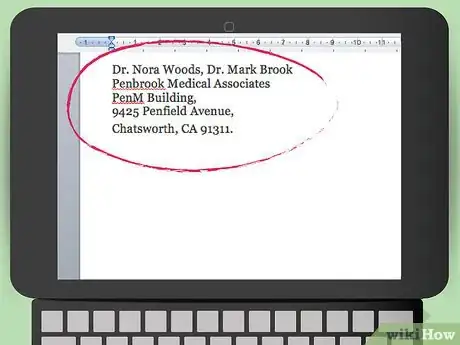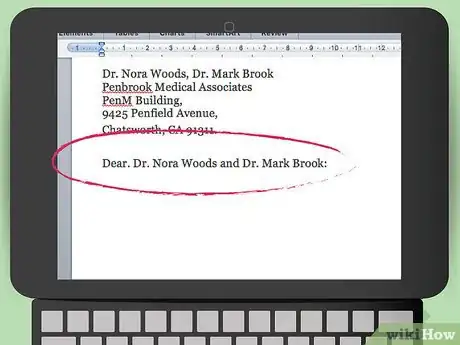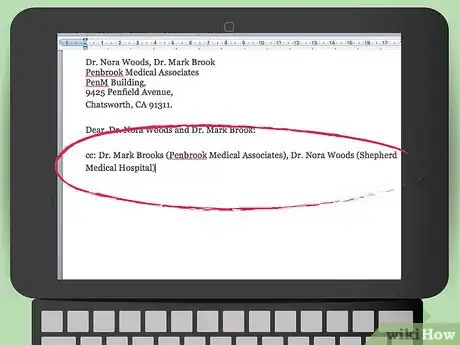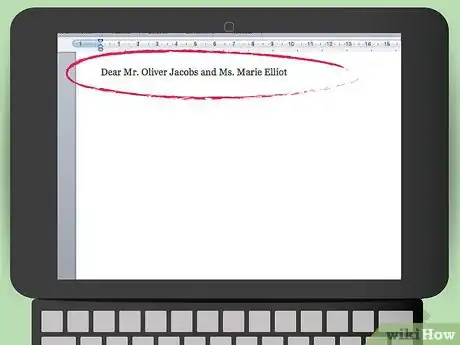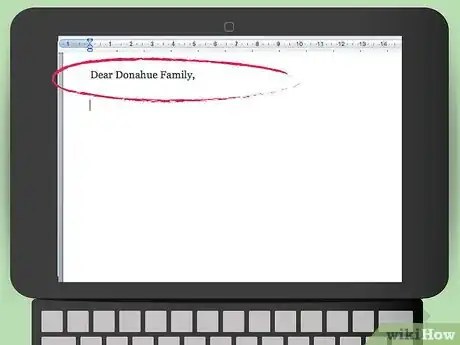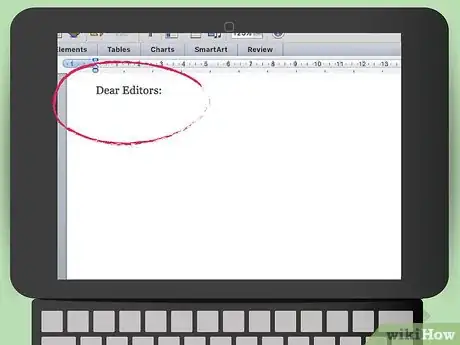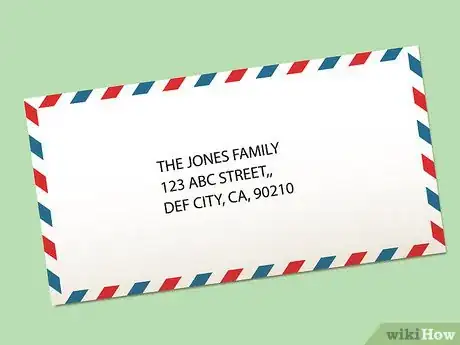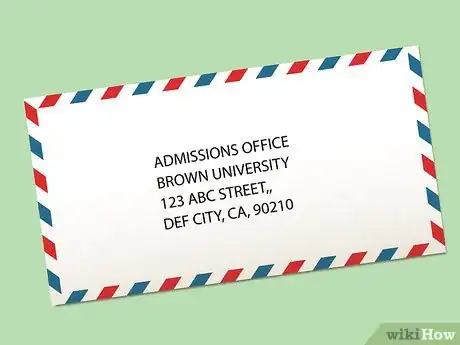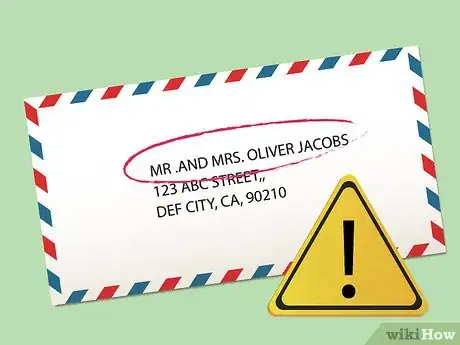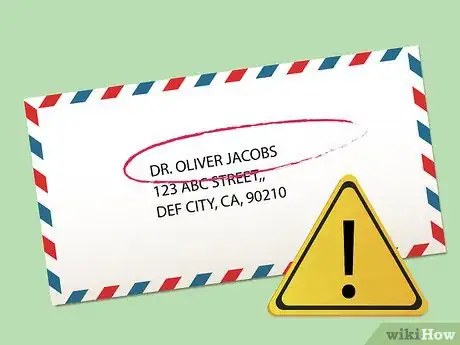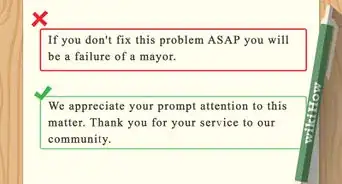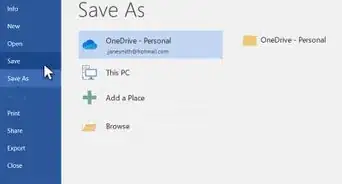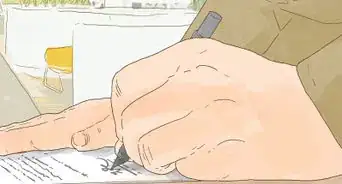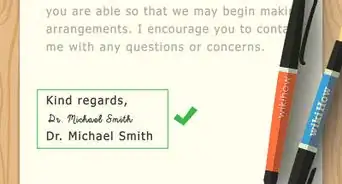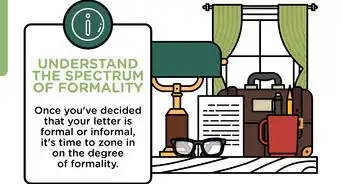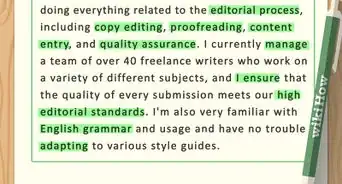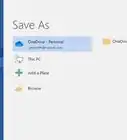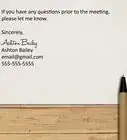This article was co-authored by Tami Claytor. Tami Claytor is an Etiquette Coach, Image Consultant, and the Owner of Always Appropriate Image and Etiquette Consulting in New York, New York. With over 20 years of experience, Tami specializes in teaching etiquette classes to individuals, students, companies, and community organizations. Tami has spent decades studying cultures through her extensive travels across five continents and has created cultural diversity workshops to promote social justice and cross-cultural awareness. She holds a BA in Economics with a concentration in International Relations from Clark University. Tami studied at the Ophelia DeVore School of Charm and the Fashion Institute of Technology, where she earned her Image Consultant Certification.
There are 7 references cited in this article, which can be found at the bottom of the page.
This article has been viewed 594,930 times.
There are many situations where you may find yourself writing a letter to multiple recipients. You may be sending a Christmas letter or wedding invitation to a large family. You may be sending a cover letter for a job where there are multiple hiring managers. Whatever the case, you have a variety of options when it comes to addressing a letter to multiple recipients.
Steps
Addressing A Professional Letter
-
1Write a header. Business letters include a header in the upper lefthand corner. This is a single-spaced list of information about the company and the letter's recipients. When addressing a business letter to multiple recipients, you will still need to include the header.
- In the top right corner of the letter, you should write the recipient' names first. Write the names using formal titles if necessary (e.g., Dr. Nora Woods), and separate the names by a comma (e.g., Dr. Nora Woods, Dr. Mark Brook).
- Then, write the name of the company on the next line (i.e., Penbrook Medical Associates), and on the next line write the company's address. On the last line write the city, the state abbreviation, and the zip code.
-
2Address all names, if possible. It may be possible to include all names in the salutation of a business letter. You can use "Dear" as your greeting, and proceed to address all the recipients. In a business letter, you end the salutation with a colon rather than a comma.[1] For example, "Dear. Dr. Nora Woods and Dr. Mark Brook:".Advertisement
-
3Include a carbon copy. However, you may be writing a letter to many, many recipients. In this case, you can include a carbon copy on the bottom of the letter. A carbon copy, or cc, lets others know who else is receiving the letter. You can include a carbon copy somewhere below your signature.
- A carbon copy is usually marked by the words "cc" or "copies to", usually followed by a colon.
- Multiple recipients are listed using their full names and alphabetically. For example, "cc: Dr. Mark Brook, Dr. Nora Woods." If the recipients are from a different business, it's important to include that business's name in parentheses after the names. For example, "cc: Dr. Mark Brooks (Penbrook Medical Associates), Dr. Nora Woods (Shepherd Medical Hospital).
- Keep in mind, the term "carbon copy" means there will be copies of the letter circulating. You should make sure, if you're using a carbon copy, all parties listed receive their own copy of the letter. You should not use a carbon copy if you're only sending the letter to one person.
-
4Use an informal word only in certain cases. In rare cases, you may be sending a business letter out to an entire office or a very large group. In this case only, it is appropriate to use an informal word to address the letter. If you're sending a mass e-mail to your entire company, for example, you can write something like, "Dear Associates" or "Dear Colleagues" if your company consists of well over 10 people. Keep in mind it is always better to get a name, however.[2]
Addressing A Personal Letter
-
1Consider formality. Formality makes a big deal in how you address a letter. When sending out a formal invitation, like a wedding invitation, it's custom to use titles like "Mr." and "Mrs." This is also the case for sending out cover letters. However, if you're sending a casual letter to a close friend or family member, formality matters less. It's appropriate to simply use first names, which may actually be easier when addressing multiple recipients. For example, it's more cumbersome to write "Dear Mr. Silas Kingsley and Mr. James Knight" than it is to simply write, "Dear Silas and James."
-
2Take special considerations with married couples. When addressing a letter to multiple recipients, you're often writing to a married couple. Do some research ahead of time. See whether or not the couple has the same last name, and make sure to address them by the appropriate title in a formal letter.[3]
- Whose name comes first is somewhat subjective, but some etiquette rules claim if someone has a high ranking title, like doctor, their name should come first. For example, if you're writing to a husband and wife, and the wife has a PhD, you would write, "Dear Dr. Jacobs and Mr. Jacobs." You could also write, "Dear Dr. and Mr. Jacobs."
- If no one has a formal title beyond "Mr." or "Mrs.", you can simply write "Dear Mr. and Mrs. Jacobs" or "Dear Mr. Jacobs and Mrs. Jacobs." This really depends mostly on your preference. You can also try something like, "Dear Oliver and Marie Jacobs." You can also switch up the order of the names. Formal rules of etiquette usually place the man's name first, but this is a largely outdated practice and some people may even take offense.
- If a couple has different last names, make sure you acknowledge this in your salutation. For example, "Dear Mr. Jacobs and Ms. Elliot" or "Dear Mr. Oliver Jacobs and Ms. Marie Elliot."
- If this is an informal letter, keep things simple. You can just write "Dear Marie and Oliver" or "Dear Oliver and Marie."
-
3Address a family as one unit, if appropriate. If you're writing a letter to a family, consider addressing them as one unit. For example, you can try something like, "Dear Donahue Family." This is a salutation often used in holiday cards.
- You can also try including a couple of names, but not all the names. If you know a couple with a lot of kids, for example, you can try something like, "Dear Katie, James, and family."
- For smaller families, including the names of everyone can be a nice touch. If it's not too cumbersome, try to include everyone's name. For example, "Dear Katie, James, Harper, and Brayden."
-
4Use an informal word as a last resort. In some cases, you may not know who exactly you're addressing. While it's always ideal to try and get a name, if it's not possible you can use informal words. If you're sending a cover letter to a large literary magazine, you can write "Dear Editors" if there are five or six editors that handle submissions. If you're a boss and sending a letter to all your employees, something like "Dear employees" is sometimes appropriate.[4]
- Keep in mind it's always best to get a name. You should only use this approach as a last resort if you're unable to find a specific name.
Addressing the Envelope
-
1Address a business letter. In a business letter, you would write the name, then the company name, then the delivery address, and lastly the city, state, and zip code. In a business letter, write the first person's name, then a comma, then their title at the company after the comma. On a new line, write the next person's name, title, and so on.
-
2Include all names, if possible. If you're sending the letter to one address, try to include all names. In a formal letter, it's best to include full names and titles of all the recipients. However, this is not always possible. It depends on the size of the envelope and your handwriting. If you're able to write small and neat, or working with a larger envelope, it's probably feasible to include all names.[5]
- For example, you could write something like "Mr. Oliver Jacobs and Mrs. Marie Jacobs" as the recipient's name. If you're limited on space, you can try something like, "Mr. and Mrs. Jacobs."
- Make sure you get titles correct. For example, if Oliver Jacobs has his PhD, write something like "Dr. Oliver Jacobs and Mrs. Marie Jacobs." Or "Dr. and Mrs. Jacobs."
- For more informal letters, do not worry as much about titles. If you are writing to close relatives or friends, "Mr." and "Mrs." are no required. Simply write something like, "Oliver and Marie Jacobs" or "Marie and Oliver Jacobs."
-
3Try referring to a family as a unit. If you're sending out a Christmas card, it's usually appropriate to write the family as a single unit, using their last name and adding "family". You can write down "The Jones Family" on the envelope. As long as you have the address correct, the mail carrier should be able to figure it out.
-
4Address a letter to the appropriate institution. If you're mailing a letter to a larger institution, you should usually write down the name of that institution. When applying to grants, scholarships, and so on, there is usually instructions on your application explaining how to address your envelope. Usually, you would write something like, "Admissions Office at Brown University."
- When sending in submissions to a literary magazine, the magazine's website should provide information on how to address your envelope.
Avoiding Pitfalls
-
1Stay away from referring to a married couple by the man's name. Some very dated rules of etiquette advise omitting the woman's name when addressing a married couple. You would address a couple as something like, "Mr. and Mrs. Oliver Jacobs." While this was once the preferred method of addressing a married couple, it's considered dated by modern standards. Many women find it sexist to have their names omitted in a letter. You should err on the side of caution and avoid omitting a woman's name when addressing a letter or envelope.[6]
-
2Avoid things like "To Whom it May Concern" in cover letters. Many people begin cover letters with something like "To Whom It May Concern." You may do this if you find multiple names for the hiring manager. However, it's always better to go with one or two names. Writing "To Whom It May Concern" conveys you did not do your research. You can usually figure out a company's hiring manager by browsing their website.[7]
- If you cannot find any information on hiring managers, use a specific word to address your cover letter. For example, "Dear Hiring Managers" would work, or something like, "Dear Hiring Staff of the Hilton Hotel."
-
3Make sure you get titles correct. When addressing multiple recipients, make sure you get everyone's title correct. Know if someone has a PhD and address them as "Dr." If someone is a priest, check to see if they're typically addressed as "Rev." When sending out a letter, you want to make sure you're respectful of everyone's titles.[8]
Community Q&A
-
QuestionHow do I address a letter to two married couples?
 Community AnswerMr. and Mrs. (last name) & Mr. and Mrs. (other last name).
Community AnswerMr. and Mrs. (last name) & Mr. and Mrs. (other last name). -
QuestionHow do I address the second page of a letter to multiple people at a company?
 DonaganTop AnswererIt's not necessary for you to address the second page.
DonaganTop AnswererIt's not necessary for you to address the second page.
References
- ↑ https://writing.wisc.edu/Handbook/BusinessLetter.html
- ↑ http://www.businesswritingblog.com/business_writing/2006/06/advice_on_speci.html
- ↑ http://www.dailywritingtips.com/addressing-a-letter-to-two-people/
- ↑ http://www.businesswritingblog.com/business_writing/2006/06/advice_on_speci.html
- ↑ http://www.enkivillage.com/how-to-address-a-letter.html
- ↑ http://www.dailywritingtips.com/addressing-a-letter-to-two-people/
- ↑ https://www.themuse.com/advice/the-3-rules-of-addressing-your-cover-letter
- ↑ http://emilypost.com/advice/guide-to-addressing-correspondence/
- ↑ http://www.businessinsider.com/who-you-send-the-thank-you-letter-during-group-interviews-the-ladders-2012-11
About This Article
To address a professional letter to multiple recipients, start with a salutation beginning with “Dear” followed by their full names. For example, write “Dear Dr. Nora Woods and Dr. Mark Brooks,” and end with a colon instead of a comma. If you’re addressing an entire office or company, you can use a less formal salutation such as “Dear Colleagues” or “Dear Associates.” Keep in mind, however, that such salutations are normally used for very large groups, or informal letters like mass e-mails. For more advice, including how to address multiple recipients in a personal letter, keep reading.
